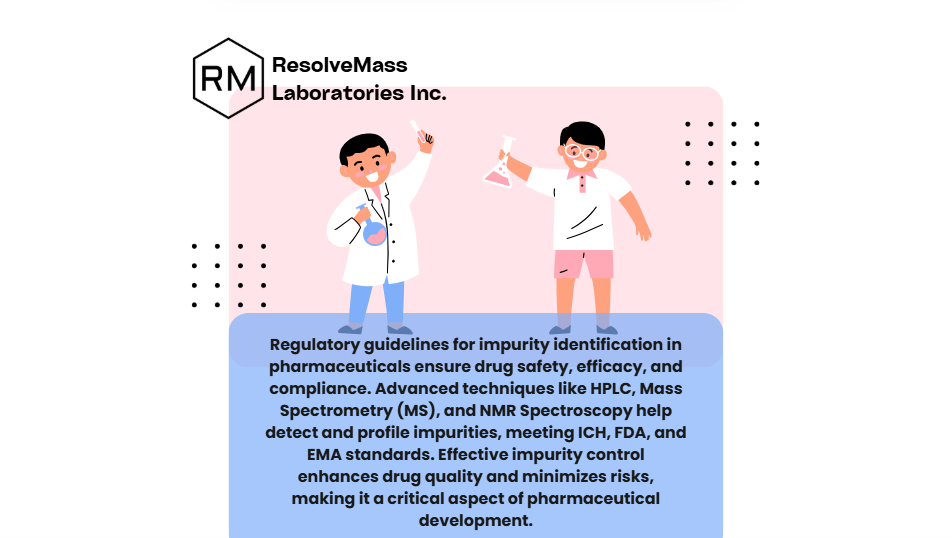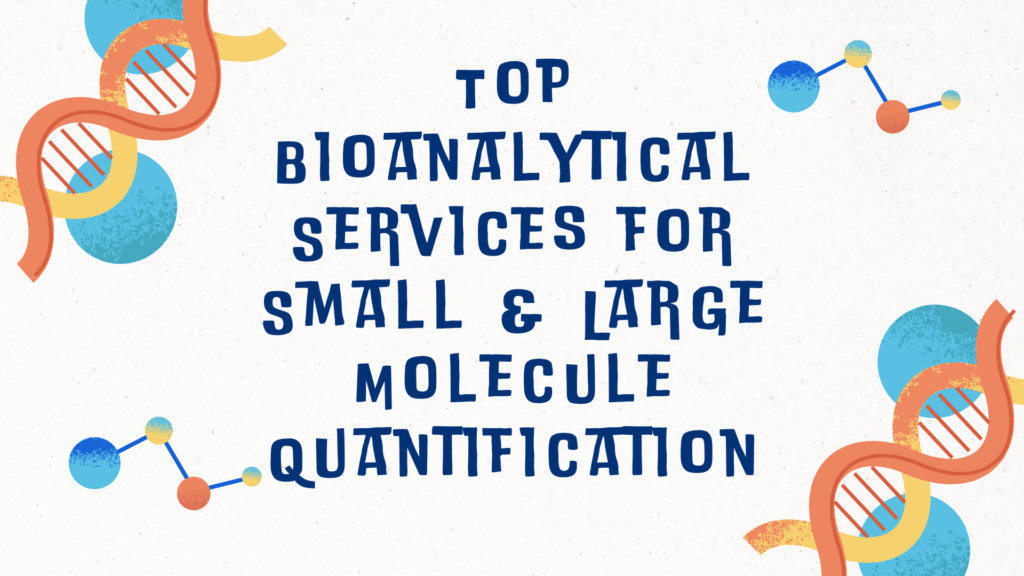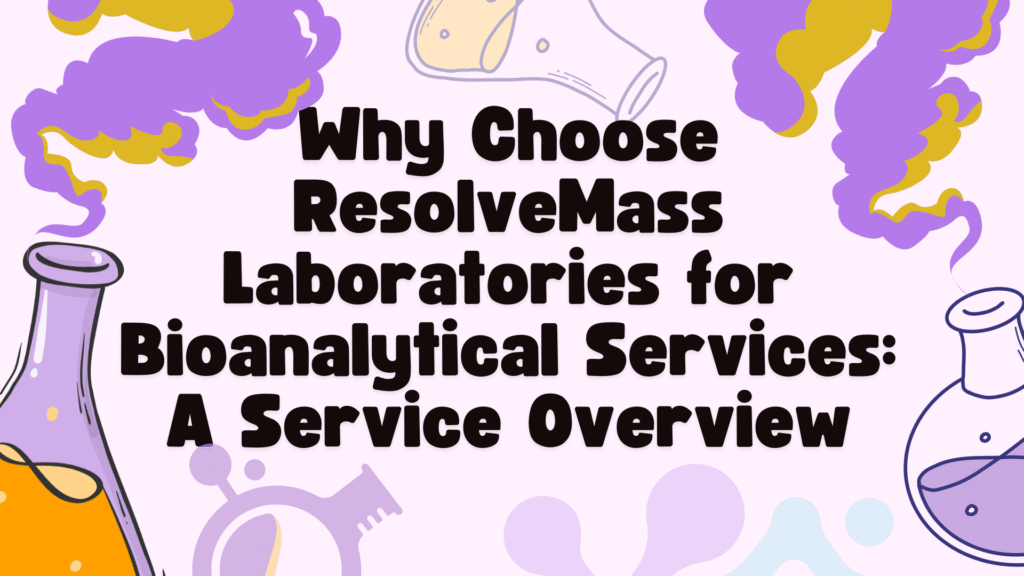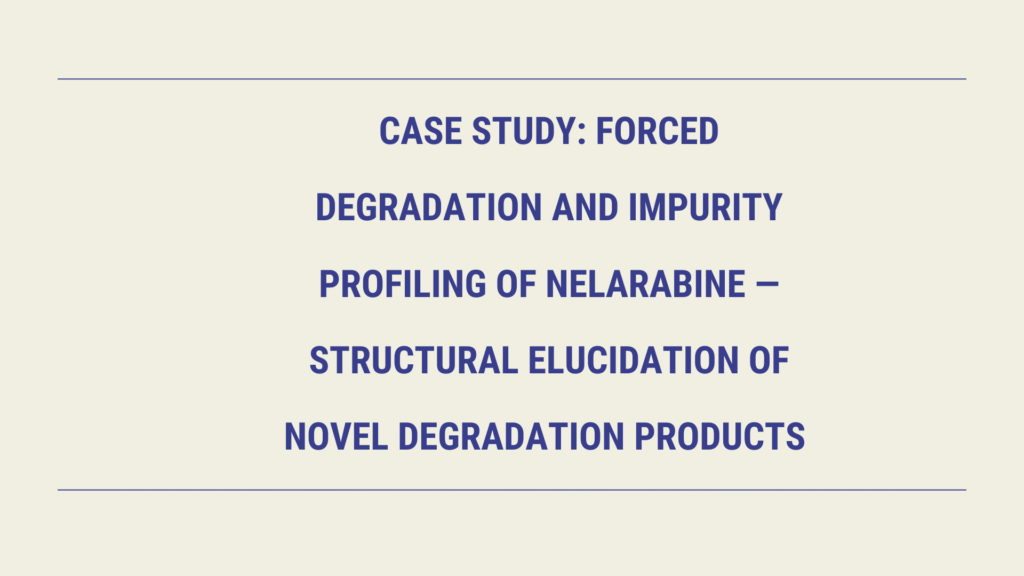
Pharmaceutical impurities can significantly impact drug safety, efficacy, and stability. Regulatory agencies such as the International Council for Harmonisation (ICH), the U.S. Food and Drug Administration (FDA), and the European Medicines Agency (EMA) have established stringent guidelines for impurity identification and profiling. This blog explores the regulatory frameworks, analytical techniques, classification of impurities, and compliance strategies for Identification & profiling of impurities in Pharmaceuticals
Understanding Identification & profiling of impurities in Pharmaceuticals
Definition of Impurities
Pharmaceutical impurities are unwanted substances that are present within active pharmaceutical ingredients (APIs) or finished drug products. These impurities can arise during the manufacturing process, degradation, or as residual solvents.
Classification of Impurities
- Organic Impurities – Derived from synthesis, byproducts, intermediates, or degradation of the API.
- Inorganic Impurities – Includes catalysts, reagents, or heavy metals that may remain in trace amounts.
- Residual Solvents – Organic and inorganic solvents used in production that remain in the final formulation.
Regulatory Frameworks Governing Identification & profiling of impurities in Pharmaceuticals
1. ICH Guidelines
ICH provides internationally recognized standards for impurity profiling. The key guidelines include:
- ICH Q3A (R2): Impurities in New Drug Substances – Addresses identification, qualification, and control of impurities.
- ICH Q3B (R2): Impurities in New Drug Products – Covers impurities arising in the final drug formulation.
- ICH Q3C (R8): Residual Solvents – Classifies solvents based on toxicity and provides permissible daily exposure limits.
- ICH M7: Assessment and Control of DNA Reactive (Mutagenic) Impurities – Focuses on genotoxic impurities and their risk assessment.
2. FDA Guidelines
The FDA aligns closely with ICH but provides additional guidance through:
- USP General Chapters <1086> and <476> – Cover impurity analysis methods.
- 21 CFR Part 211 – Establishes current good manufacturing practices (cGMP) for impurity control.
- FDA Guidance on Elemental Impurities – Implements ICH Q3D principles for heavy metal contaminants.
3. EMA Guidelines
The European Medicines Agency requires compliance with:
- EMA/CHMP/QWP/251344/2011 – Specifies impurity requirements for drug approvals.
- ICH Q3D (R2) – Details risk-based approaches for controlling elemental impurities.
Analytical Techniques for Impurity Identification and Profiling
1. High-Performance Liquid Chromatography (HPLC)
HPLC is the most widely used technique for impurity analysis due to its high resolution and sensitivity.
2. Gas Chromatography (GC)
GC is particularly useful for volatile impurities and residual solvent detection.
3. Mass Spectrometry (MS)
MS, often coupled with HPLC or GC, enables precise impurity identification through molecular weight determination and structural elucidation.
4. Nuclear Magnetic Resonance (NMR) Spectroscopy
NMR is essential for structural confirmation of unknown impurities.
5. Fourier-Transform Infrared Spectroscopy (FTIR)
FTIR helps in functional group identification and differentiation of closely related compounds.
6. Inductively Coupled Plasma Mass Spectrometry (ICP-MS)
ICP-MS is the gold standard for detecting trace levels of inorganic impurities and heavy metals.
Challenges in Identification & profiling of impurities in Pharmaceuticals
- Complexity of Drug Formulations – Modern drugs often contain multiple APIs and excipients, making impurity detection more challenging.
- Stringent Regulatory Compliance – Adhering to evolving impurity guidelines requires continuous method validation and risk assessment.
- Analytical Sensitivity Limitations – Detecting ultra-trace levels of impurities demands highly sophisticated instruments.
- Cost and Time Constraints – Advanced analytical techniques require significant investment in time, resources, and expertise.
Risk Assessment and Control Strategies for Impurities
1. Threshold of Toxicological Concern (TTC) Approach
The TTC concept is used to determine whether an impurity poses a significant safety risk at low exposure levels (ICH M7).
2. Control Strategies in Manufacturing
- Implementing robust Good Manufacturing Practices (GMP).
- Employing Quality by Design (QbD) principles.
- Using in-process controls (IPCs) to monitor impurity levels.
3. Stability Studies for Degradation Impurities
Forced degradation and long-term stability studies ensure that degradation impurities remain within acceptable limits.
Future Trends in Identification & profiling of impurities in Pharmaceuticals
1. Advancements in Analytical Technologies
- Artificial Intelligence (AI) and Machine Learning for predictive impurity profiling.
- Hyphenated Techniques (LC-MS, GC-MS, NMR-MS) for enhanced impurity characterization.
2. Green Chemistry Approaches
Regulatory agencies emphasize reducing residual solvents and heavy metals using eco-friendly synthetic methods.
3. Personalized Medicine and Biologics
With the rise of biopharmaceuticals, gene therapies, and monoclonal antibodies, impurity profiling will evolve to accommodate biologics-specific challenges.
Conclusion
Pharmaceutical impurity profiling is a critical aspect of drug safety, efficacy, and regulatory compliance. Adhering to ICH, FDA, and EMA guidelines ensures the highest quality standards while minimizing patient risk. Advanced analytical methods such as HPLC, MS, NMR, and ICP-MS are instrumental in identifying and controlling impurities effectively. As the industry advances, the integration of AI-driven impurity prediction, green chemistry, and biologics-focused approaches will shape the future of impurity profiling.
REFERENCES
- Pilaniya K, Chandrawanshi HK, Pilaniya U, Manchandani P, Jain P, Singh N. Recent trends in the impurity profile of pharmaceuticals. Journal of Advanced Pharmaceutical Technology & Research. 2010 Jul 1;1(3):302-10.
- Bari SB, Kadam BR, Jaiswal YS, Shirkhedkar AA. Impurity profile: significance in active pharmaceutical ingredient. Eurasian J Anal Chem. 2007 Mar 1;2(1):32-53.
- Qiu F, Norwood DL. Identification of pharmaceutical impurities. Journal of liquid chromatography & related technologies. 2007 Feb 1;30(5-7):877-935.
- Prajapati P, Agrawal YK. Analysis and impurity identification in pharmaceuticals. Reviews in analytical chemistry. 2014 Aug 1;33(2):123-33.
- Görög S, editor. Identification and determination of impurities in drugs. Elsevier; 2000 May 19.
LET’S CONNECT
At ResolveMass Laboratories Inc., we specialize in impurity profiling and regulatory compliance testing. Our advanced analytical services ensure that your pharmaceutical products meet global regulatory standards.
The Role of Extractables and Leachables (E&L) in Carcinogenicity Risk
Introduction Extractables and Leachables Carcinogenicity Testing plays a vital role in protecting patients who rely…
Case Study: Forced Degradation Study of Gimeracil — Discovery and Structure Elucidation of Novel Impurities
Introduction Forced degradation studies are a cornerstone of modern pharmaceutical development, enabling scientists to intentionally…
Affordable Bioanalytical Services for Start-Up Biotech: What to Expect
INTRODUCTION Affordable bioanalytical services for start-up biotech companies provide the essential analytical support needed to…
Top Bioanalytical Services for Small & Large Molecule Quantification
Introduction Bioanalytical services for small & large molecule quantification are essential for ensuring precision, sensitivity,…
Why Choose ResolveMass Laboratories for Bioanalytical Services: A Service Overview
INTRODUCTION The short answer is: clients choose ResolveMass because this ResolveMass Bioanalytical Services Overview demonstrates…
Case Study: Forced Degradation and Impurity Profiling of Nelarabine — Structural Elucidation of Novel Degradation Products
Introduction: The Critical Role of Forced Degradation in Defining Nelarabine Stability Forced degradation testing continues…







